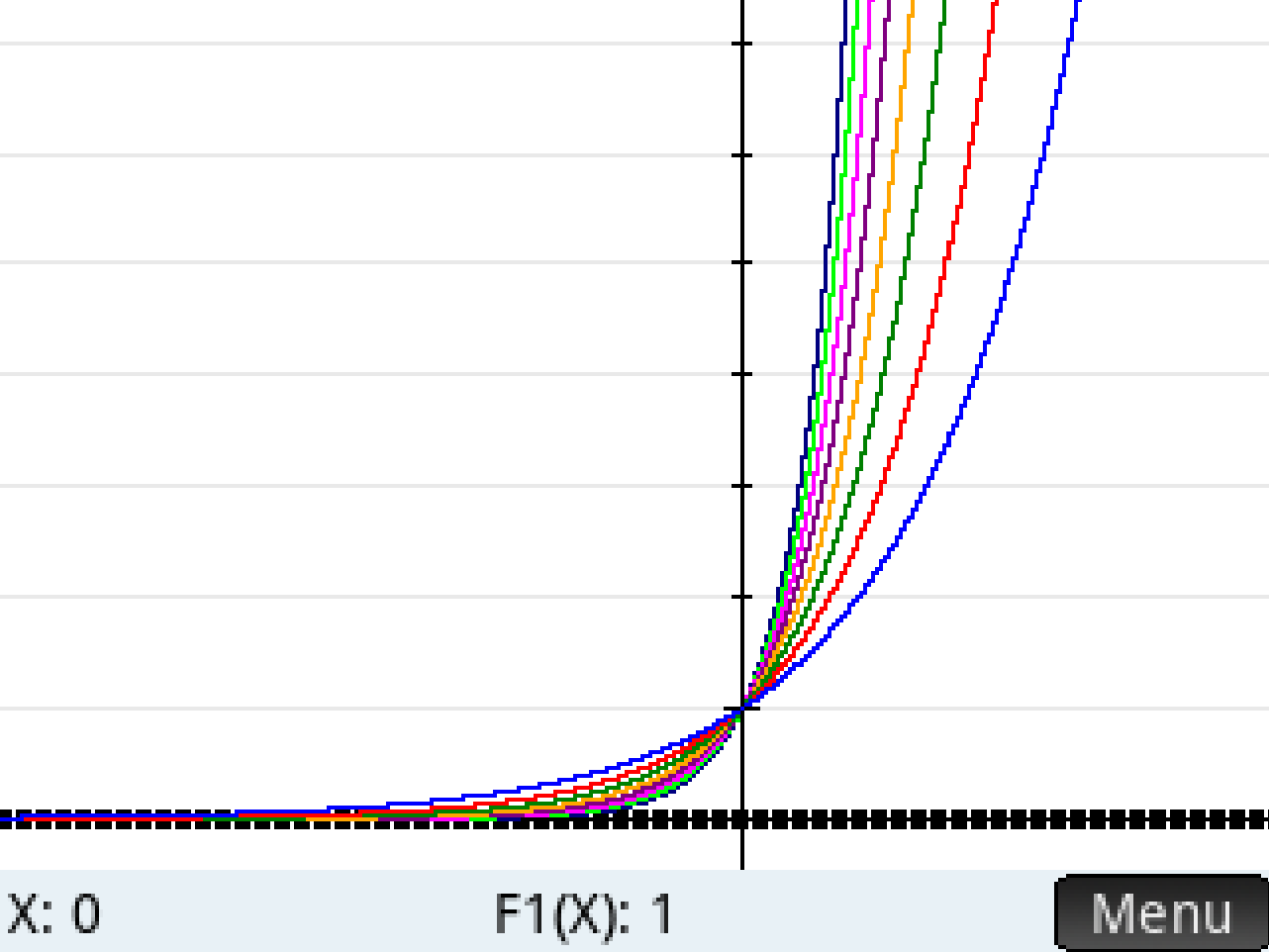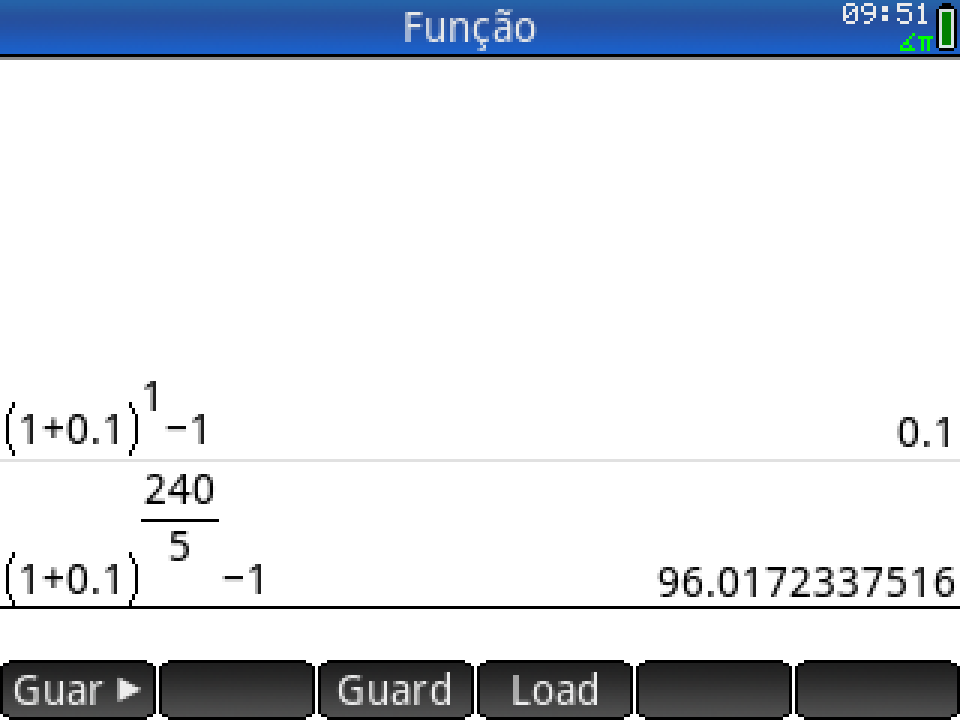Strategy Guide #2
### EN ###
In the last reading, we discussed what an INVESTMENT is. Recapping, Benjamin Graham defined investment as an operation that, after thorough analysis, promises the safety of the principal and a suitable return.
FV = PV × (1+r) ^ n
If we consider FV as the future value of our investment, PV as the PRINCIPAL, and (1+r)^n as the RETURN of this operation, we can simplify the equation above as follows:
INVESTMENT = PRINCIPAL × RETURN
PRINCIPAL = PV
RETURN = (1+r) ^ n
The RETURN of the operation is composed of two variables: (r), which is the capitalization rate, and (n), which is the number of capitalization periods.
Let's plot the yield graphs to understand how this part of the function is graphically represented:


Note that the blue line represents a yield of 3% annually, while the black line represents a yield of 10% annually.
The higher your capitalization rate (r), the faster your investment will generate returns. Time (n) also plays a fundamental role in the return. Notice that the longer the investment horizon, the higher the received yield. If we achieve an adequate investment rate and time for compound interest to take effect, at least in theory, it would be possible to obtain a high yield. Of course, in practice, there are other issues, as assets (stocks) are subject to external factors such as the influence of macroeconomic variables like Gross Domestic Product (GDP), interest rates, and inflation, as well as internal factors, as a business may acquire or lose a competitive advantage capable of affecting its growth and results.
Summarizing all we discussed, in a very simple way, there are two ways to increase your yields:
1) Obtain a higher interest rate (increase r): compare the slope of the 3% annual interest rate curve (blue line) with the 10% annual interest rate curve (black line). By achieving a higher rate, it will be possible to obtain an acceptable return in less time, anticipating your gain.
2) Have patience (increase n): it is important to wait for several capitalization periods for the effect of compound interest to take effect, producing the results described in the graph above.
In a long-term investment operation, an investor tolerates lower returns and trusts that time will play its part, producing a satisfactory return.
In a speculation operation, the speculator does not have the patience to wait years to realize their results, so they seek to operate in very short periods (short term), with several rapid operations to generate a high return.
Earning 10% in a one-year operation is very different from earning in a one-week operation. Take a look:

In the first case, it generates exactly 10%, as we can expect.
In the second case, we calculate a yield of 10% per week. What would be the equivalent annual rate? We consider only the business days in a year (240) and a one-week period of 5 days (Monday to Friday). Note that a yield of 10% per week equates to an annual return of over 9,600%, as the weekly rate is compounded 48 times (240/5)! With this perspective, it is very clear to understand why speculators seek high returns in short periods.
SPECULATION x LIQUIDITY
Regardless of any judgment about what is better, whether to invest or speculate, we must recognize that the speculator has an extremely important role in the Capital Market, which is to create LIQUIDITY. An asset is more liquid the easier it is to convert it into cash. For this to happen, it is necessary to find a counterpart for the operation we wish to carry out, be it a purchase or a sale. Speculators contribute to the movement of markets and allow us most of the time to conclude an order.
SUMMARY
| OPERATION | CHARACTERISTICS |
|---|---|
| INVESTMENT | Long-term Deadlines Moderate Capitalization Rates Concern with Businesses Buy and Hold |
| SPECULATION | Short-term Deadlines High Capitalization Rates Concern with Prices and Volumes Contributes to Liquidity Generation in the Market Day Trades |
What role will you assume in MIMEX? The game allows you to act both as an investor and as a financial speculator. It is possible to buy a single asset, holding it in your portfolio for up to five years, or carry out various operations with the aim of obtaining quick and larger returns. If your desire is to act as an investor, it is recommended to configure the game for longer periods (minimum of 3 years).
### PT ###
Na última leitura, conversamos sobre o que é INVESTIMENTO. Recapitulando, Benjamin Graham, definiu investimento como uma operação que, após análise profunda, promete a segurança do principal e um retorno adequado.
FV = PV × (1+r) ^ n
Se considerarmos FV o valor futuro do nosso investimento, PV como o PRINCIPAL e (1+r)^n como o RENDIMENTO desta operação, podemos simplificar a equação acima da seguinte forma:
INVESTIMENTO = PRINCIPAL x RETORNO
PRINCIPAL = PV
RETORNO = (1+r) ^ n
O RETORNO da operação é composto de duas variáveis: o (r), que é a taxa de capitalização e (n) que é o número de períodos de capitalização.
Vamos traçar os gráficos de rendimento para entender como essa parte da função é representada graficamente:


Repare que a linha azul representa um rendimento de 3% a. a, enquanto a linha preta representa um rendimento de 10% a. a.
Quanto maior for a sua taxa de capitalização (r), mais rapido seu investimento gerará retorno. O tempo (n) também exerce um papel fundamental no retorno. Perceba que quanto maior é o horizonte de investimento, maior é o rendimento recebido. Se conseguimos uma taxa de investimento adequada e tempo para que a capitalização composta (compounding interest) faça efeito, pelo menos em teoria, seria possível obter um alto rendimento. É claro que na prática existem outros problemas, pois os ativos (ações) estão sujeitos a fatores externos, como a influência das variáveis macroeconômicas como o Produto Interno Bruto (PIB), taxa de juros e inflação, quanto fatores internos, pois um negócio pode adquirir ou perder uma vantagem competitiva capaz de afetar o seu crescimento e resultados.
Resumindo tudo o que nós discutimos, de uma forma bem simples, existem duas formas de aumentar os seus rendimentos:
1) obter uma taxa de juros mais alta (aumentar r): compare a inclinação da curva de juros de 3% a. a (linha azul). com a curva de juros de 10% a. a. (linha preta). Ao conseguir uma taxa mais alta, será possível obter um retorno aceitável em menos tempo, antecipando seu ganho;
2) ter paciência (aumentar n): é importante esperar vários períodos de capitalização para que o efeito dos juros compostos faça efeito, produzindo os resultados descritos no gráfico acima;
Em uma operação de INVESTIMENTO de longo prazo, um investidor tolera taxas de retorno mais baixas e confia que o tempo fará o seu papel, produzindo um retorno satisfatório;
Em uma operação de ESPECULAÇÃO, o especulador não tem paciência de esperar anos para realizar seus resultados, então busca operar em períodos muito curtos (curto prazo), com várias operações rápidas para gerar um retorno alto.
Ganhar 10% em uma operação de um ano é muito diferente de ganhar numa operação de uma semana. Veja:

No primeiro caso, gera exatamente 10%, como podemos esperar.
No segundo caso, calculamos o rendimento de 10% por semana. Qual seria a taxa equivalente anual? Consideramos apenas os dias úteis em um ano (240) e o período de uma semana útil de 5 dias (segunda a sexta). Note que um rendimento de 10% por semana equivale a um retorno anual de mais de 9.600% ao ano, já que a taxa semanal é capitalizada 48 vezes (240/5)! Com essa visão, é muito claro de entender porque os especuladores buscam rendimentos altos em períodos curtos.
ESPECULAÇÃO x LIQUIDEZ
Independente de qualquer tipo de juízo sobre o que é melhor, se é investir ou especular, temos de reconhecer que o especulador possui uma função extremamente importante no Mercado de Capitais, que é criar LIQUIDEZ. Um ativo é mais líquido quanto mais fácil for convertê-lo em dinheiro. Para que isso aconteça, é preciso encontrar uma contraparte para a operação que desejamos realizar, seja ela uma compra ou uma venda. Os especuladores contribuem para a movimentação dos mercados e que possamos na maior parte das vezes concluir uma ordem.
RESUMO
| OPERAÇÃO | CARACTERÍSTICAS |
|---|---|
| INVESTIMENTO | Prazos Longos Taxas de Capitalização moderadas Preocupação com os Negócios Buy and Hold |
| ESPECULAÇÃO | Prazos Curtos Taxas de Capitalização altas Preocupação com Preços e Volumes Contribui para a geração de liquidez no Mercado Day Trades |
Qual papel assumirá em MIMEX? O jogo permite que você atue tanto no papel de investidor quanto no de especulador financeiro. É possível comprar um único ativo, carregando-o em sua carteira por até cinco anos, ou ainda realizar várias operações com o intuito de obter retornos rápidos e maiores. Se o seu desejo é atuar como investidor, é recomendado configurar o jogo para períodos mais longos (mínimo de 3 anos).
Get Mimex - Micro Stock Market Exchange
Mimex - Micro Stock Market Exchange
stock-exchange
| Status | In development |
| Author | Rogerio Biondi |
| Genre | Simulation |
| Tags | finance, stocks, ZX Spectrum, zx-spectrum-next |
More posts
- Strategy Guide #3Aug 22, 2024
- Mimex Web AvailableAug 22, 2024
- Strategy Guide #1Mar 28, 2024
- Mimex featured on Planeta SinclairMar 28, 2024
- Mimex Beta 1 is availableMar 27, 2024
Leave a comment
Log in with itch.io to leave a comment.